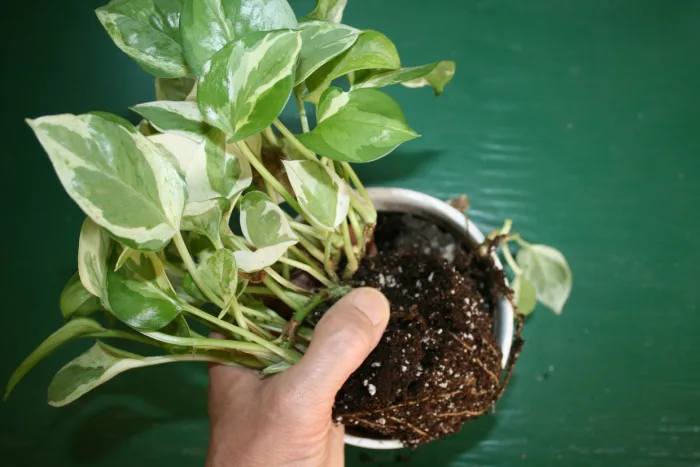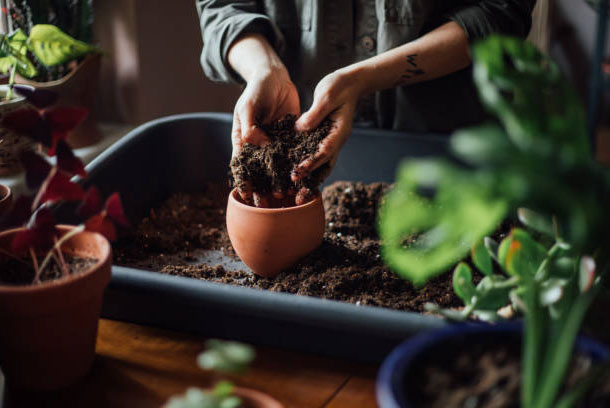Signs You Need to Repot Your Houseplants
You may get limited new growth if your indoor plants have sat in the same pots for several years. Houseplants eventually become pot-bound, requiring new soil and a larger container. Spring and fall are the ideal times to give them a new home.
Roots emerging from the bottom of the pot, sluggish growth and water rushing through the soil when it’s watered are all signs that a plant needs repotting.
If you are unsure if it’s time to repot, remove the plant from the container and inspect the roots. A bulky mass of tangled roots means it’s time to repot. Roots coming out of the drainage holes are another sign.
Though it may seem like a good idea to give your houseplant plenty of room for growth by choosing a pot that is several sizes larger, doing so can be counterproductive. Excess soil around plant roots becomes waterlogged, promoting fungal disease, which can lead to root rot and plant death. In most cases, it is best to choose a container that is just one size larger. For instance, if your plant is in a 10-inch pot, then move up to a 12-inch container.

Steps for Repotting Your Houseplants:
1. Help prevent transplant shock by watering at least two hours before repotting.
2. Protect floor surfaces in the home by putting plastic or metal screening inside the new pot over the drainage holes before adding soil. Prevent leaching in clay pots by treating them with a sealer.
3. Carefully remove the plant from the old container by laying it on its side and pulling it out. If it does not come out easily, hold the plant stem and soil surface steady with one hand and invert the pot with the other, tapping the pot rim against the edge of a hard surface. If the plant still refuses to budge, run a sharp knife around the inner rim of the pot and then try removing it. In stubborn situations, cut or break the pot.
4. Before planting, carefully loosen roots, unwinding any that have been encircling the inside of the old pot. If the root mass is thick, trim it by 10 to 20 percent. This will stimulate the roots to venture into new soil. If you want your houseplant to remain the same size, rather than growing larger, trim plant roots by 1 inch all the way around. Then put new soil in the same container and replant

5. To plant, place enough soil in the bottom of the new pot so that when you set the plant inside, the soil line falls 1/2 to 1 inch below the pot rim. Fill the pot with potting soil, tapping the entire pot two or three times as you fill it. Pat down the surface of the soil when done. Also make sure that the plant is potted at the same level as it was in its original container. Generally, you want to just cover the root-ball with soil and leave the stem completely exposed.
6. Water the plant well and don’t water again until the top 1 to 2 inches is dry. Overwatering after repotting can quickly lead to fungal disease and root rot. If the soil is still wet but the plant shows signs of wilting, mist the foliage with water; the plant will absorb the moisture through its leaves. Most plants use less water when they are newly transplanted, so don’t be surprised if your plant doesn’t need a drink for some time.
7. Wait at least one month before fertilizing a transplant. Feed only when the plant has resumed new growth.





